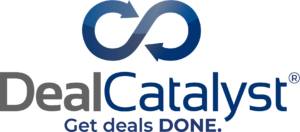October 26, 2017 - Tuesday’s LSTA Conference delved into the perspectives of sponsors, buyside and sellside to frame how the market is evolving. The first panel of the day – The Primary Market – boasted views from JP Morgan, Goldman, Invesco and Guggenheim. First up: Supply and demand (see Slide 3 in the deck). To wit, the eye-catching $400 billion of “new” institutional loan issuance actually has been comprised primarily of refinancings. Moreover, even when only new money loans are considered, a significant portion of those replaced existing loans. (Consider a sponsor-to-sponsor LBO: while a new loan comes on, the old loan is replaced.) In addition, there have also been many repayments from bond issuance, asset sales and more. Net-net, new loan supply – measured as the change in the size of the S&P/LSTA Leveraged Loan Index – has only been $55 billion. This has been vastly overwhelmed by demand from CLOs, SMAs and loan mutual funds.
Why hasn’t there been more supply? In part, it’s because buying companies is so hard. As slide 10 of the Primary Panel deck demonstrates, LBO Purchase Price Multiples (“PPM”) are at record highs. Meanwhile, debt multiples haven’t climbed as much. To bridge this gap, sponsor equity contributions are very high. Combine high PPMs and large equity contributions, and sponsors have to write very big checks. In turn, sponsors are focusing more on smaller companies where their equity checks can go further. Moreover, with big equity contributions, sponsors have to focus on making the IRR work. This means monetizing through dividends and/or seeking structures that maximize their flexibility. And this leads us to loan documentation that “enhances sponsor optionality”. Indeed, when polled, 53% of the audience said that “loose documentation” is the most problematic deterioration in loan terms in 2017. The buyside panelists flagged issues that worried them: Specifically, the ability to add incremental debt alongside the ability to transfer collateral to unrestricted subsidiaries. The former issue means the company may be more leveraged; the latter means that if the company defaults, collateral value may be much weaker.
So what breaks these trends? There is no consensus. An audience poll suggests either an exogenous shock (34%) or an unexpected default surge (25%). But, frankly, the panelists say the status quo – excess demand, softening structures, falling spreads – probably prevails for the next 12 months.
Since there is little indication that that a great deal of supply is likely to come on line, the final panel of the day “Buyside – CLOs and More!” discussed the dynamics of demand. First came the sizing of the investor constituencies: $473 billion of CLOs (up $30 billion from the beginning of the year), $155 billion of loan mutual funds (up $20 billion since the beginning of the year), and an estimated $120 billion of SMAs (said estimate was based on a panelist’s SMA accounts and perceived market share).
How does investor structure drive market terms? Loan mutual funds and, to a lesser extent, SMAs require liquidity to meet redemptions. This dictates how they structure their funds (cash holdings, T+2 bond holdings, lines of credit) and their loan investments tend to be on the more liquid side. However, because CLOs are such big investors, their needs – around spreads and ratings – tend to dictate where market terms can go. While there has been gnashing of teeth on how low loans spreads have fallen, we may not be done yet. Slide 9 shows that they were much lower in 2007. At that time, 80% of BB/BB- TLBs were priced below LIB+200 (vs. one or two today) and half the B+/B TLBs were priced below LIB+250 (vs. 10% today). So how low does pricing go in this cycle? 48% of audience respondents said BB loans will hit LIB+200 on average. Buckle up.






